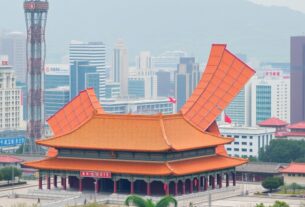Amelia Island, Florida – A rare divergence in tone between Federal Reserve officials and the federal government emerged this week, as central bankers signaled rising concerns over the inflationary impact of new U.S. import tariffs, even as Washington downplayed the threat.
Speaking on the sidelines of a high-level economic conference, Atlanta Fed President Raphael Bostic delivered a candid assessment: the inflationary wave tied to tariffs may only just be beginning. “There’s been a lot of front-running, building inventories and all those sorts of things,” he said, referring to businesses that preemptively stockpiled goods to buffer against the cost hikes. “Those strategies… are starting to run their course.”
As those inventory buffers dwindle, Bostic warned, price increases may begin to ripple more broadly through the economy testing the resilience of consumers and potentially complicating the Fed’s already delicate interest rate calculus. “We’re about to see some changes in prices,” he said. “And then we’re going to learn how consumers are going to respond to that.”
Despite these cautionary notes from the Fed, administration officials in Washington have remained upbeat, suggesting the impact of tariffs will be limited and manageable. That disconnect highlights a growing tension between economic policy and political messaging, a dynamic that could shape markets and consumer confidence in the months ahead.
Cleveland Fed President Beth Hammack reinforced the message of caution. “We should wait and see where the economy is going before we do anything definitive,” she said, emphasizing the need to listen closely to local business communities and observe real-world data before adjusting interest rates. Her sentiment was echoed by San Francisco Fed President Mary Daly, suggesting a unified stance within the Fed to adopt a “wait-and-see” posture.
The central bank is now expected to remain on the sidelines longer than initially anticipated, with only a single quarter-point rate cut likely this year, according to Bostic. The hesitation underscores the Fed’s growing uncertainty about how deeply the Trump administration’s tariff policies will cut into economic momentum.
While politicians in Washington may dismiss the risks, the Fed’s message is clear: inflation could be coming not as a specter, but as a surge and they intend to keep their hands steady on the wheel until they know which way the wind is truly blowing.




